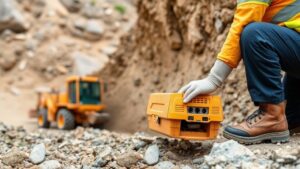How to Use Soil Chemistry Testing to Identify Areas of Potential Artifact Concentrations
How to Use Soil Chemistry Testing to Identify Areas of Potential Artifact Concentrations
Soil chemistry testing has emerged as a pivotal tool in archaeological investigations, especially for identifying areas of potential artifact concentrations. By analyzing the chemical composition of soil, archaeologists can gain insights into past human activities and settlement patterns. This article delves into the methodologies of soil chemistry testing, its significance in archaeological contexts, and real-world applications to uncover potential artifact hotspots.
Understanding Soil Chemistry Testing
Soil chemistry testing involves analyzing the elements and compounds present in the soil to understand its characteristics and history. Key components often examined include pH, organic matter content, and the presence of various nutrients and trace elements. These factors can provide critical information about past land use, vegetation, and human activities.
The primary methods for soil chemistry analysis include:
- pH Testing: Measures the acidity or alkalinity of the soil, which can influence decay rates of organic materials and the preservation potential of artifacts.
- Nutrient Analysis: Identifies concentrations of macronutrients (such as nitrogen, phosphorus, and potassium) and micronutrients (such as zinc and copper), which can be linked to past agricultural practices.
- Soil Horizon Examination: Involves assessing the different layers of soil to understand stratigraphy and past environmental conditions.
Correlation Between Soil Chemistry and Artifact Concentrations
The relationship between soil chemistry and artifact concentrations is fundamental to archaeological research. Specific chemical signatures can indicate human activity or land use. For example, elevated phosphorus levels often correlate with past settlements due to organic waste and agricultural practices.
A pertinent case study is the examination of prehistoric sites in the American Southwest, where soil chemistry testing revealed higher soil fertility and nutrient levels in locations with known habitation sites. Measuring the phosphorus levels in soils can pinpoint spots where communities may have gathered, cultivated, or disposed of refuse.
Methodologies for Useation
Useing soil chemistry testing in archaeological investigations involves several key steps:
- Site Selection: Identify areas with known archaeological significance or potential based on historical records and surface surveys.
- Sampling Strategy: Design a systematic sampling approach, such as grid sampling, to collect soil samples at regular intervals to ensure representative data.
- Laboratory Analysis: Send samples to accredited laboratories for chemical analysis, where they can perform various tests and provide detailed reports.
- Data Interpretation: Analyze and interpret the results in the context of existing archaeological knowledge, complemented by fieldwork to validate findings.
Real-World Applications and Case Studies
One notable application of soil chemistry testing is its use in urban archaeology. In cities such as Rome and Athens, researchers have employed these techniques to uncover stratified layers of human activity beneath modern infrastructure. For example, a project in Rome utilized soil pH and nutrient content analysis to determine the locations of ancient marketplaces, leading to successful excavations of previously unknown sites.
Another case is the study of the agricultural practices of ancient Mayan civilization in the Yucatán Peninsula. By assessing nutrient levels and soil composition, archaeologists were able to map ancient agricultural fields and understand their societal impacts, lifestyle changes, and regional interactions over centuries.
Addressing Potential Concerns
While soil chemistry testing is a powerful tool in archaeology, potential challenges exist. One major concern is soil heterogeneity, which can result in variable chemical compositions even within short distances. This variability necessitates extensive and careful sampling to ensure meaningful conclusions. Also, contamination from modern pollutants can skew results, so careful site selection and analysis practices are essential.
Actionable Takeaways
To effectively harness soil chemistry testing in archaeological research, consider the following actionable steps:
- Conduct thorough preliminary research to identify potential testing sites
- Develop a comprehensive sampling methodology that accounts for soil variability
- Collaborate with qualified laboratories for accurate analysis and interpretation
- Integrate findings from soil chemistry with other archaeological data for richer insights
To wrap up, soil chemistry testing serves as a crucial method for identifying areas of potential artifact concentrations. By understanding and applying these techniques, archaeologists can unveil the hidden histories of human civilizations and enhance our knowledge of past societies.



